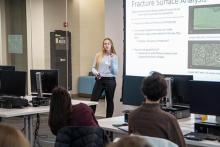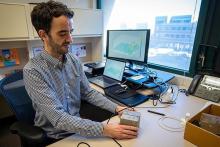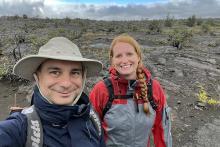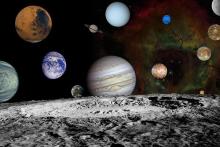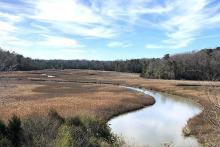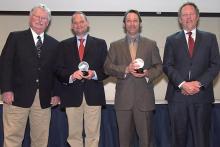Penn State has recognized three faculty members as Atherton Professors, a new distinction created
Just about a year into her Penn State experience, second-year geosciences student Grace Druschel felt she already was making strides toward her research goals. Better yet, she was working on something she believes has extreme societal importance.
Earthquakes are notoriously hard to predict, and scientists currently rely on seismic hazard maps to predict the likelihood of an earthquake to strike a particular region.
As Guido Cervone takes the reins as president of the natural hazards section of the American Geophysical Union (AGU) he brings with him decades of experience in using machine learning, remote sensing and increasing representation to forecast, respond and mitigate dangers from natural hazards.
Bradford Foley, associate professor of geosciences at Penn State, will discuss habitability conditions of exoplanets at 4 p.m. Monday, April 3, in 112 Walker Building at University Park and on Zoom.
Six Penn State faculty members have received the 2023 George W. Atherton Award for Excellence in Teaching.
Susan Avery, president emerita of the Woods Hole Oceanographic Institution, will deliver the commencement address for the College of Earth and Mineral Sciences’ 2023 baccalaureate degree commencement ceremony.
A Penn State-led interdisciplinary team of researchers across six institutions was awarded a $3.5 million grant from the National Science Foundation to investigate the role that macrobiota, such as clams, salt marshes and seagrasses, play in carbon cycling in estuaries.
Penn State's College of Earth and Mineral Sciences (EMS) recognized exceptional students and faculty for their academic excellence, service and leadership during its annual Wilson Awards Celebration, held on Sunday, April 23.



